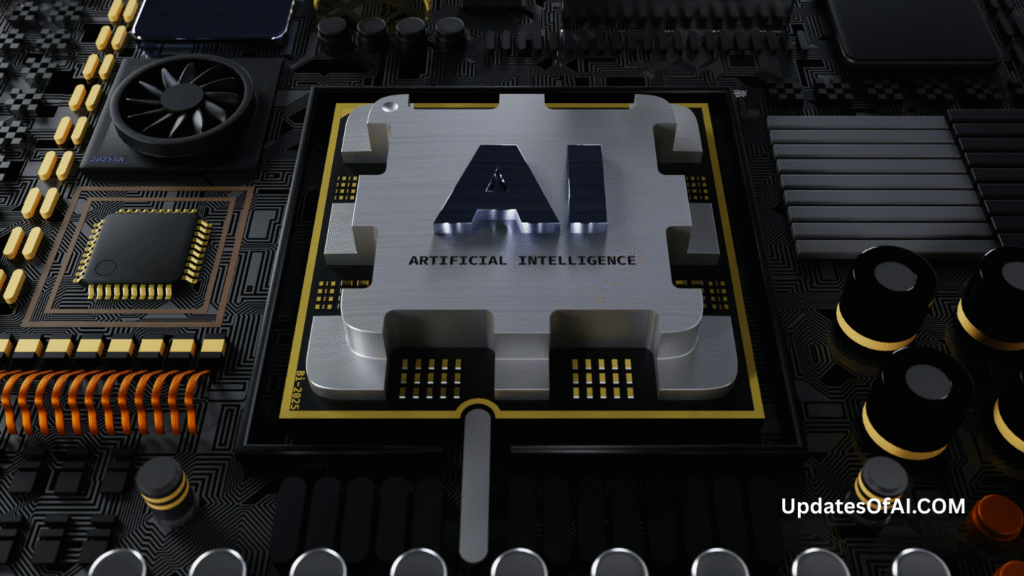The Best Open-Source AI Models You Can Use in 2025 | UpdatesOfAI

Author: UpdatesOfAI.com
Source: Compiled and curated by UpdatesOfAI.com using publicly available data as of June 2025.
Disclaimer: The image used in this article is sourced from Unsplash.com and is free to use under the Unsplash License. No attribution is required, but always appreciated.
As artificial intelligence continues to evolve rapidly, 2025 is proving to be a landmark year for open-source AI models. These models democratize access to cutting-edge technology and give developers, researchers, and startups powerful tools that were once only available to big tech companies. Whether you’re building applications, automating workflows, or experimenting with machine learning, open-source models offer flexibility, transparency, and cost-effectiveness.
In this article, we’ll explore the best open-source AI models available in 2025 that you can start using today.
1. Meta’s LLaMA 3 (Large Language Model Meta AI)
Meta has continued to lead the open-source charge with the release of LLaMA 3, one of the most anticipated models of the year. Available in both 8B and 70B parameter versions, LLaMA 3 rivals many proprietary models in terms of performance.
Why is it great?
- Highly efficient and optimized for multi-lingual tasks
- Supports fine-tuning and RLHF out of the box
- Strong community and extensive ecosystem integrations (Hugging Face, Ollama, etc.)
Best for: Developers looking to build AI chatbots, summarization tools, or any NLP-related application.
2. Mistral 7B & Mixtral 8x7B
Mistral, a fast-rising open-source AI company, has released two powerful models: Mistral 7B, a dense model, and Mixtral 8x7B, a sparse Mixture of Experts (MoE) model.
Why it’s great:
- Competitive performance with fewer parameters
- MoE architecture allows Mixtral to activate only part of the model per task, improving speed and cost-efficiency
- Fully open weights with permissive licensing
Best for: Startups needing fast, low-cost inference for high-performance tasks.
3. Gemma by Google DeepMind
Google’s contribution to open-source AI, Gemma, is based on the same research as Gemini but optimized for lightweight and accessible use. Available in 2B and 7B versions, it’s released under an open license tailored for developers and researchers.
Why it’s great:
- Lightweight and easy to run on local hardware
- Strong performance in ethical alignment and factuality
- Built with safety and responsibility in mind
Best for: Educators, researchers, and developers who want a safe and ethical model for experimentation.
4. Phi-3 from Microsoft
Microsoft has introduced Phi-3, a small yet powerful model trained with curated high-quality data. Its compact size belies its capabilities, especially in coding and reasoning tasks.
Why it’s great?
- Surprisingly strong performance for its size
- Works well on mobile and edge devices
- Optimized for reasoning, math, and language understanding
Best for: Mobile app developers and teams needing lightweight, efficient LLMs.
5. Claude 2.1 (Open Weights Emulation by Community)
While Anthropic’s Claude itself is not open-source, the community has worked hard to emulate its architecture and style with models like OpenClaude and OpenChat based on similar tuning methods.
Why it’s great:
- Tuned for helpfulness, harmlessness, and honesty
- Popular among AI researchers studying safety alignment
- Thriving open-source community building Claude-style responses
Best for: Researchers focused on alignment and safety in conversational AI.
6. OpenBioLLM – AI for Life Sciences
A niche but powerful entrant, OpenBioLLM is tailored for biomedical and life sciences tasks. Built from the ground up using domain-specific data, this model is helping accelerate medical research and biotech innovation.
Why it great?
- Specializing in biomedical literature understanding
- Used in drug discovery and clinical trial summarization
- Freely available for academic use
Best for: Healthcare startups, pharma researchers, and academic labs.
What Makes a Great Open-Source AI Model?
When choosing an AI model to integrate into your workflows or applications, consider the following:
✅ Performance — Does it match or exceed proprietary models?
✅ License — Is it permissive (MIT, Apache 2.0) or restricted?
✅ Community Support — Are updates, tools, and docs readily available?
✅Ease of Use — Is it compatible with Hugging Face, LangChain, or Ollama?
✅ Efficiency — Can it run locally or on lower-cost GPUs?
Final Thoughts
2025 is a golden year for open-source AI. With major players like Meta, Google, Microsoft, and emerging startups contributing to the ecosystem, there’s never been a better time to explore these powerful tools. Whether you’re building a chatbot, a search assistant, or an industry-specific solution, these models provide a strong foundation, without the lock-in or cost of proprietary options.
That was it. Hopefully, you got the point, and if you have an interest in AI automation and believe AI is going to change the future, you are welcome to UpdatesOfAI, where we provide up-to-date news on AI tools, agents, and also resources, money-making tips and tricks, all in one place.
Thank you very much for your valuable time, and we are waiting for you at updatesofai.com.
Have a great day!